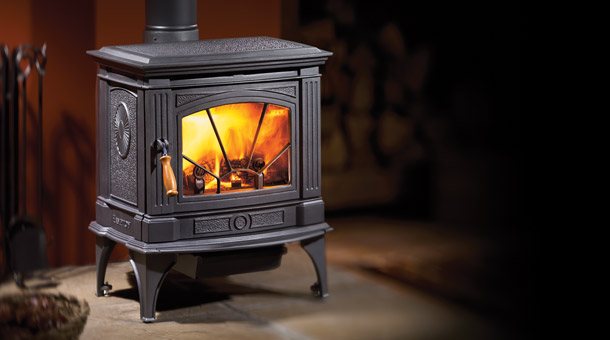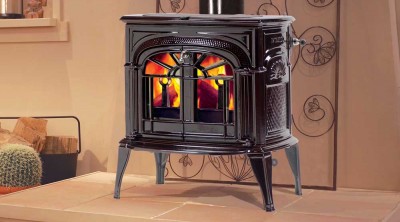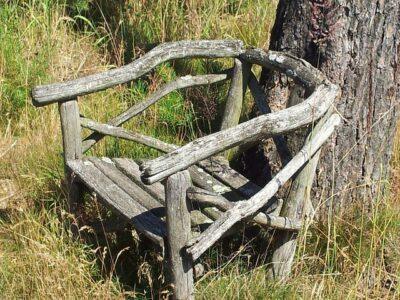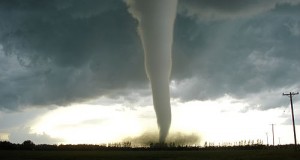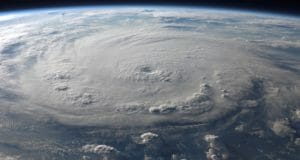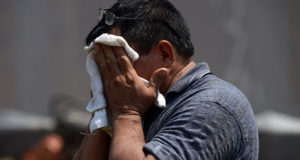It might be a bit simplistic to say that a wood-burning stove or fireplace is the only heat alternative in winter. However, for many people affected by the North American Ice Storm of 1998, it was their only heating source for months when power lines across Ontario, Quebec, Nova Scotia and northern New York and Maine succumbed to ice.
Thirty-five people reportedly died as a result of the storm and millions were left scrambling to find ways to generate heat and stay warm.
Alternative such as propane, kerosene heaters and natural gas heaters can be a great backup if the power goes out. The problem during big storms is that stores quickly sell out of propane, kerosene and the heaters they fuel. So unless you had those resources already on hand, your only alternative was a wood-burning option, assuming you had a fireplace or wood-burning stove.
For those without any heating options, massive shelters were opened and supported by 16,000 Canadian troops.
The Latest Solar Generators Are 4 Times More Powerful Than Previous Ones!
For those with a fireplace or woodstove, the only option was to keep the fires burning until they ran out of firewood. While a sufficient stockpile of firewood could have alleviated the problem, many people typically only used their fireplaces and wood-burning stoves occasionally and stored only a small amount of wood.
To complicate matters, people who did have wood – or lived on wooded properties – were highly protective of the resource. And the wood that was for sale was not cheap. So many who opted to tough it out in their homes used some interesting alternatives. Here’s a few, although it’s important to stress: These should be used only in emergencies. Using them long-term could cause a house fire.
Alternative 1 – Yard and garden trees and shrubs
The first alternative that many people turned to were trees and shrubs in their yards and gardens. It wasn’t an easy task for thoe who didn’t have a chainsaw or the gas to power it, but neighbors cooperated by sharing tools, gas and sometimes labor, especially in exchange for some firewood.
Axes and handsaws were often used as well, and harvesting and stacking wood became a daily chore.
A fundamental limitation was that most of the wood was green and unseasoned, and smaller branches from shrubs burned quickly unless tightly bundled.
Alternative 2 – Rolled paper logs
Some people with sufficient stockpiles of paper created paper logs that were tightly bound into rolls about three to four inches thick. The paper used included newsprint, magazines, books, phone books and any paper trash.
There are paper log-rollers available on the Internet, but most people in the storm simply sat down and rolled their paper logs by hand. Bailing wire was sometimes used to bind the paper logs, but string, rubber bands and anything else that would bind the paper tightly was used, too.
For the record, paper logs last about a fourth as long as a wood log and they don’t burn quite as hot (they mostly smolder), but they maintained the heat in desperate times.
Alternative 3 – Lumber scraps
Many of us have lumber scraps leftover from that knotty-pine basement remodel or hardwood floor installation and we store these for other minor projects. People in the ice storm made good use of these extras.
A limitation is that these kinds of wood tend to burn hot and fast, especially in a fireplace. They also tend to spit and spark quite a bit, so if you’re using this kind of wood in a fireplace, make sure you have the screen tightly closed and move all rugs from the vicinity.
On a side note, a fireplace is far from an ideal wood-burning heat source. Many people stranded in the storm made the best of using a fireplace, but in reality most of the heat produced is lost up the chimney.
Alternative 4 – Damaged furniture
We’ve all got some damaged or old furniture in our garages and basements. Many of those old desks and cabinets found their way to the woodstove or fireplace when the storm hit. This kind of wood also sparks and spits and, depending on the type of wood, can burn very fast.
There also are stories of people tearing up their backyard decks as a wood source. There’s some danger here due to the fact that most decking is chemically treated to resist moisture. If the stove or fireplace is not well-vented, the chemicals can be released into the house. There were no specific reports or complaints about this hazard, although there were many reports of problems with carbon monoxide from poorly ventilated kerosene and propane heaters.
Alternative 5 – Rolled rag-logs
This was one of the most extreme solutions. It involved rolling rags and pieces of fabric along with twigs and bark into tightly-bound logs. Your best bet if you ever have to go this route is to use natural fibers, like cotton or wool. Burning synthetic fibers is as bad as burning plastic.
Alternatives to Avoid
While you might be desperate to stay warm, there are certain things that you shouldn’t burn in your home. These include:
- Charcoal briquettes. They are impregnated with a chemical that produces significant carbon monoxide. Save these for cooking outside.
- As mentioned before, most wood used for decks is chemically treated. Perhaps if the deck wood is old and weathered some of the chemicals are gone, but consider using only at your own risk.
- Any flammable fuel like gasoline, motor oil, kerosene, turpentine, alcohol, etc. These fuels are dangerous and burn very hot and very fast. The limited amount of time that any fuel like this would burn would not be worth the heat nor the risk.
- Burning plastic is toxic, produces copious black smoke and creosote, and will leave a hard, tar-like substance in your stove, fireplace and flue. Forget about plastic.
- Roofing materials. This is another bad choice that burns as poorly and as toxic as plastic. Don’t even think about it. The same goes for rubber.
There are a number of factors that can take down the grid, and this event was a dramatic demonstration of the dangers and the implications. If you’re going to have to depend on wood heat in an emergency, consider alternatives like well-ventilated kerosene and propane stove options. As for me, I keep three cords of wood just in case.
What alternatives would you add to this list? Share your ideas in the section below:
 Off The Grid News Better Ideas For Off The Grid Living
Off The Grid News Better Ideas For Off The Grid Living

